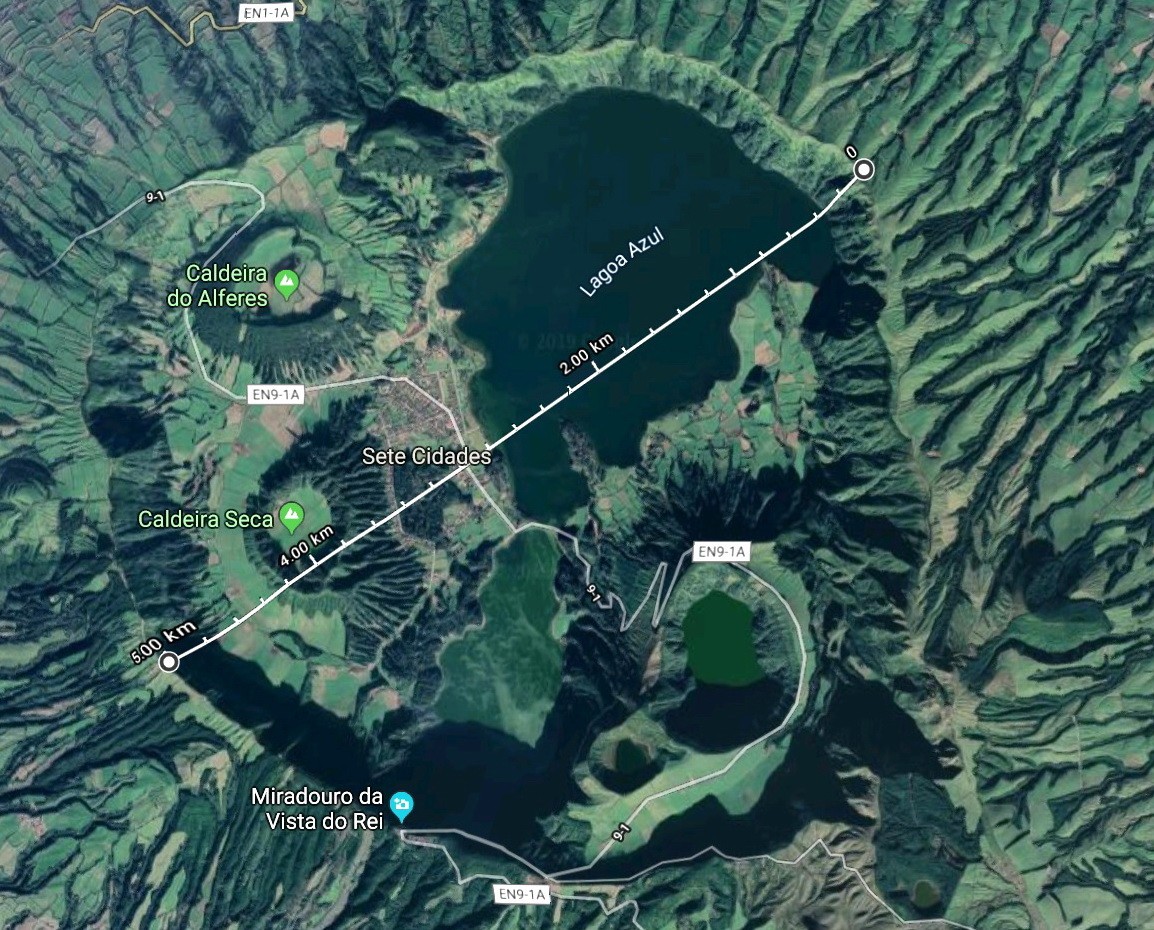July 8, 2019
Azorean calderean – but no swimmean.
The parks and botanical gardens of the Azores I’ve already told you about. Now for something else no less important – the islands’ volcanisms; in this post, about two of them – the Sete Cidades Massif and Lagoa do Fogo (Lagoon of Fire).
Volcanism No. 1 – the Sete Cidades Massif – a stratovolcanic complex made up of a volcano, a caldera, and a lake in the caldera:
The caldera has a complex structure. It is some 5km in diameter (imagine the eruption involved to create that!), and inside it there are seven partly destroyed and very overgrown younger volcanic cones. Sounds amazing? Looks amazing! ->





















